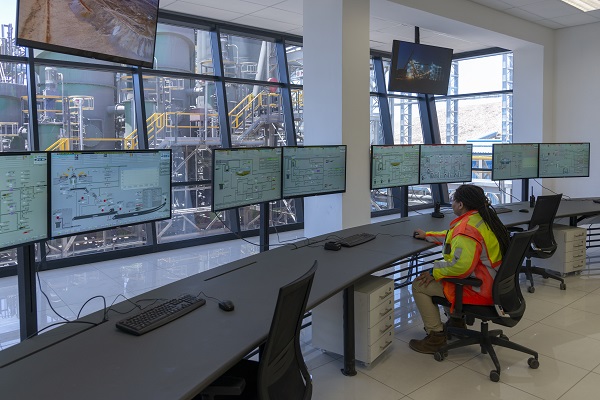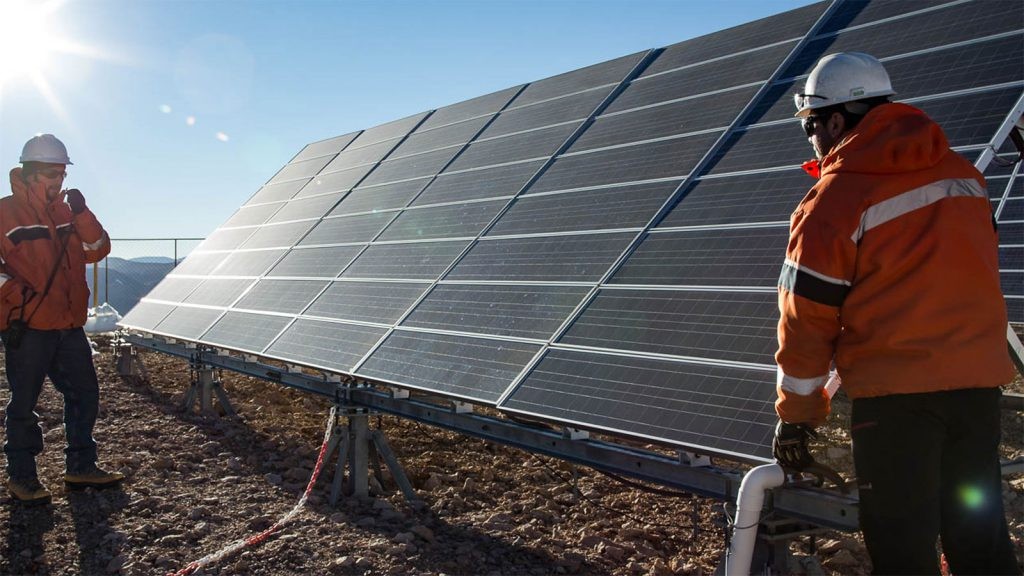[ad_1]
- Africa properties about 30 per cent of the world’s mineral reserves, together with 40 per cent of the world’s gold, 60 per cent of its cobalt, and 80 per cent of the platinum group metals.
- Mineral assets are a important income for Africa.
- The curiosity in renewable energies within the mining trade arises from the escalating power demand inside the sector.
Mining in Africa faces ongoing challenges because of environmental degradation and social conflicts with native communities. Deforestation, land degradation, and air air pollution are persistent points linked to mining actions. Nevertheless, efficient prevention and mitigation measures can alleviate these impacts.
Africa’s mineral wealth is staggering. The continent properties about 30 per cent of the world’s mineral reserves, together with 40 per cent of the world’s gold, 60 per cent of its cobalt, and 80 per cent of the platinum group metals. The Democratic Republic of Congo (DRC), as an illustration, with over 70 per cent of the world’s cobalt reserves, has already witnessed how strategic mineral extraction can considerably elevate its gross home product (GDP). In line with the World Financial institution’s “Africa’s Pulse” report from 2022, these important minerals are instrumental in how nations just like the DRC transition towards extra sustainable financial fashions.
The African Continental Free Commerce Space (AfCFTA) dramatically elevates this potential, weaving collectively an unlimited market of 1.3 billion people. It’s designed to turbocharge cross-border mining investments, dismantle commerce obstacles, and breathe new life into intra-continental commerce. Leveraged successfully, this formidable initiative might considerably increase Africa’s mining output, harnessing the continent’s collective financial energy and collaborative spirit.
Mining in Africa
Mineral assets are a important income for Africa. In 2019, minerals and fossil fuels accounted for over a 3rd of exports from a minimum of 60 per cent of African nations. The continent produces round 80 per cent of the world’s platinum, two-thirds of its cobalt, half of its manganese, and a considerable quantity of chromium, leaving it in a strong place to learn from rising demand for these minerals. Furthermore, Africa is believed to have a few of the world’s largest untapped mineral reserves.
Sadly, because of lack of systematic geological mapping and exploration means the total scope of the continent’s assets stays unknown. Mining corporations and African governments should embrace Fourth Industrial Revolution (4IR) applied sciences to unlock mineral-rich African nations’ full potential. Synthetic intelligence (AI), automation, and massive knowledge can assist mining corporations restrict environmental injury, enhance working circumstances, cut back working prices, and enhance productiveness.
Adopting environment friendly renewable-energy programs is already serving to the mining sector cut back its environmental impression. Autonomous 4IR applied sciences complement the clean-energy transition by slicing gas consumption in loading, hauling, crushing, and drilling processes. In line with one estimate, driverless know-how might result in a 10-15 per cent lower in gas use on mine websites.
Higher use of information and analytics may also enhance mine efficiency. Mining corporations generate monumental quantities of information all through their operations, however only some use it in a means that gives actual worth. This represents a major missed alternative as a result of superior analytics can optimise mine planning, improve yields, and cut back gear downtime.
4IR applied sciences will outline the way forward for mining. However whereas they symbolize super alternatives for enhancing productiveness, bettering security, and mitigating the environmental impression of mining, additionally they increase authentic issues. Many new technology-enabled jobs require expert staff that the labour market can not provide, implying restricted employment alternatives with out academic and coaching packages to reskill staff.
Scaling the mining trade in Africa

Growing native processing industries might considerably enhance value-added, create higher-skilled jobs, and improve tax revenues, thereby supporting poverty discount and sustainable growth. By diversifying their economies and transferring up the worth chain, nations will turn into much less uncovered to unstable commodity costs and extra capable of defend themselves towards alternate fee volatility and overseas foreign money reserve pressures.
Overseas direct funding can assist present the capital and experience to develop mineral processing industries, however the absence of a considerable regional market makes native processing investments much less engaging. Policymakers must treatment this.
Nations can develop a supportive enterprise surroundings by strengthening home monetary markets and bettering entry to finance. New fintech improvements supply thrilling potential to assist corporations that serve the mining sector however need assistance securing conventional financing. Managing new useful resource windfalls responsibly requires accountable and clear establishments allied with applicable tax regimes and sound public monetary administration.
Enhancing sustainability within the African mining sector
Africa’s potential to realize the Sustainable Growth Objectives (SDGs) by 2030 is bolstered by its ample mineral wealth, together with tansanite, gold, diamonds, uranium, platinum, and coal. Nevertheless, many nations grapple with the useful resource curse, civil unrest, and excessive poverty.
In response to international pressures for sustainability, mining corporations in Africa are more and more adopting low-carbon applied sciences and sustainable practices. Superior applied sciences like machine studying, synthetic intelligence, cloud computing, and robotics are revolutionising course of automation within the mining sector, enabling real-time monitoring and complete simulations in the course of the design part.
Moreover, modern mining strategies corresponding to in-situ leaching are being embraced to minimise environmental impression. Integrating different power sources like photo voltaic, wind, and hydroelectric energy is poised to cut back mines’ carbon footprint and improve sustainability.
Adapting renewable energies within the mining trade

The curiosity in renewable energies within the mining trade arises from the escalating power demand inside the sector, accounting for six.2 per cent of worldwide power consumption, with 32 per cent of power used being electrical energy. Mines more and more depend on power, with blackouts probably costing as much as $100 million. Photo voltaic power emerges as an economical resolution, significantly in distant websites with restricted infrastructure, providing long-term financial savings in comparison with diesel turbines or grid-based electrical energy.
Photo voltaic-powered mining operations profit from diminished gas prices, decrease upkeep bills, and elevated power independence whereas producing employment in native communities. Examples like B2Gold’s Fekola Mine in Mali, Essakane Gold Mine in Burkina Faso, Gold Fields’ South Deep Gold Mine in South Africa, and B2Gold Otjikoto Mine in Namibia spotlight the success of photo voltaic integration, resulting in important value financial savings and environmental advantages.
To attain sustainability within the African mining sector, a complete strategy encompassing environmental, social, and financial dimensions is essential. This strategy ought to emphasise renewable power adoption, accountable mining practices, and technological innovation. A cohesive coverage framework, particularly relating to photo voltaic power adoption, is important to bolster sustainability efforts throughout the mining sector.
Conclusion
The pivotal trade development shaping Africa’s mining sector trajectory lies within the capability of trade gamers to undertake sustainable mining practices, prioritising not solely financial good points but in addition addressing social and environmental issues. This transition necessitates establishing and implementing sturdy coverage frameworks, together with clear and adaptive regulatory frameworks, incentive packages, grid integration and infrastructure enhancement, capability constructing and consciousness initiatives, and funding for analysis and growth packages.
Trade leaders and policymakers should work collectively to capitalise on digitalisation’s alternatives. Many mining corporations are reluctant to put money into new operations that require a steady regulatory framework as a result of they don’t belief African governments’ capability to implement compliance. As a primary step, governments should change that notion. In any case, the financial advantages of digitalisation lengthen to governments and native communities. As mines turn into extra productive and worthwhile, nationwide governments could have extra income to put money into infrastructure, like roads, colleges, and well being clinics.
Mines that embrace digital transformation will improve their manufacturing, run extra effectively and successfully, and be extra environmentally sustainable. They’ll set new requirements for staff’ well being and security and will contribute to reskilling via academic and coaching packages. In brief, they’ll disrupt Africa’s mining sector, however some great benefits of digitalisation, if harnessed appropriately, will far outweigh the dangers.
[ad_2]






